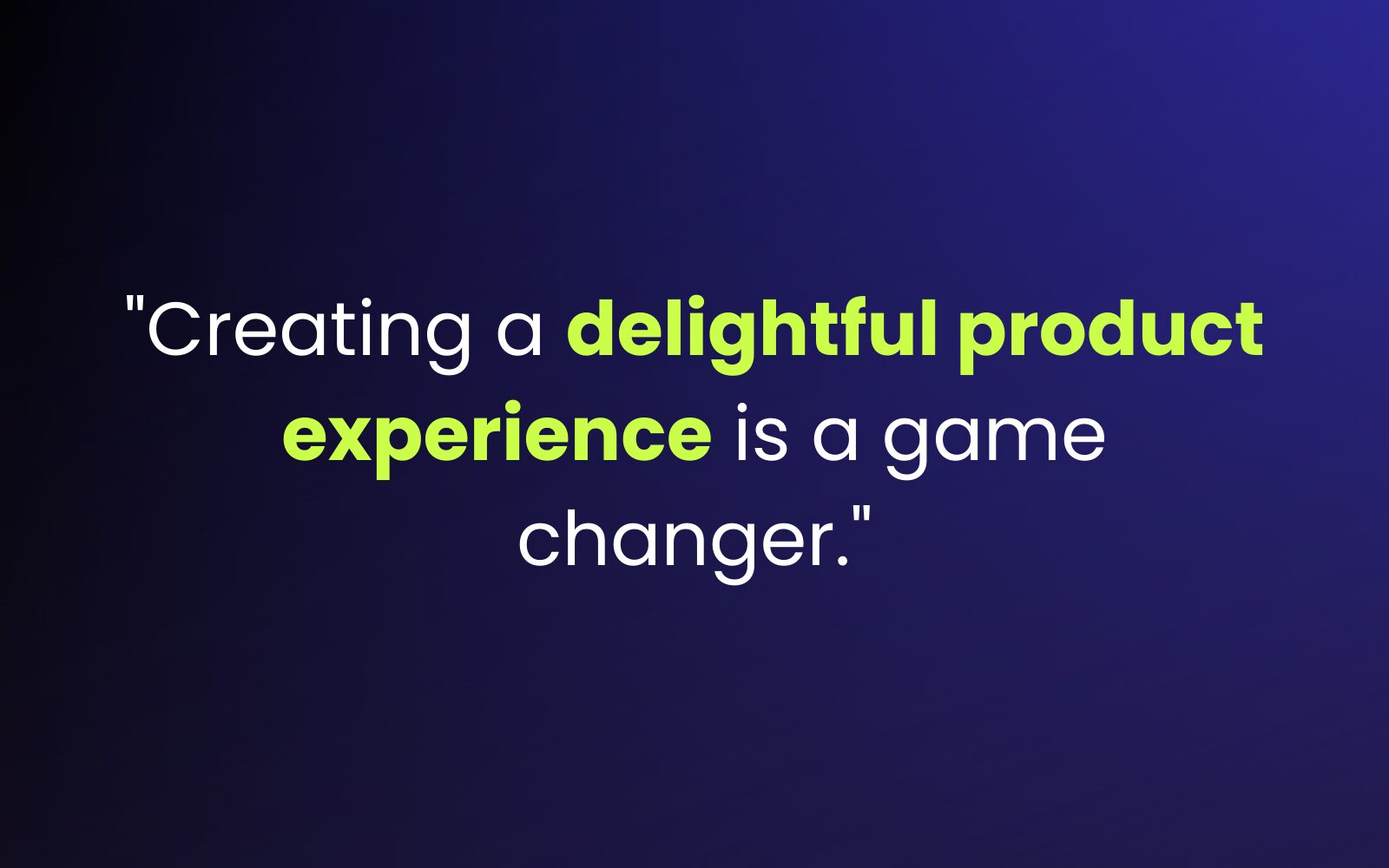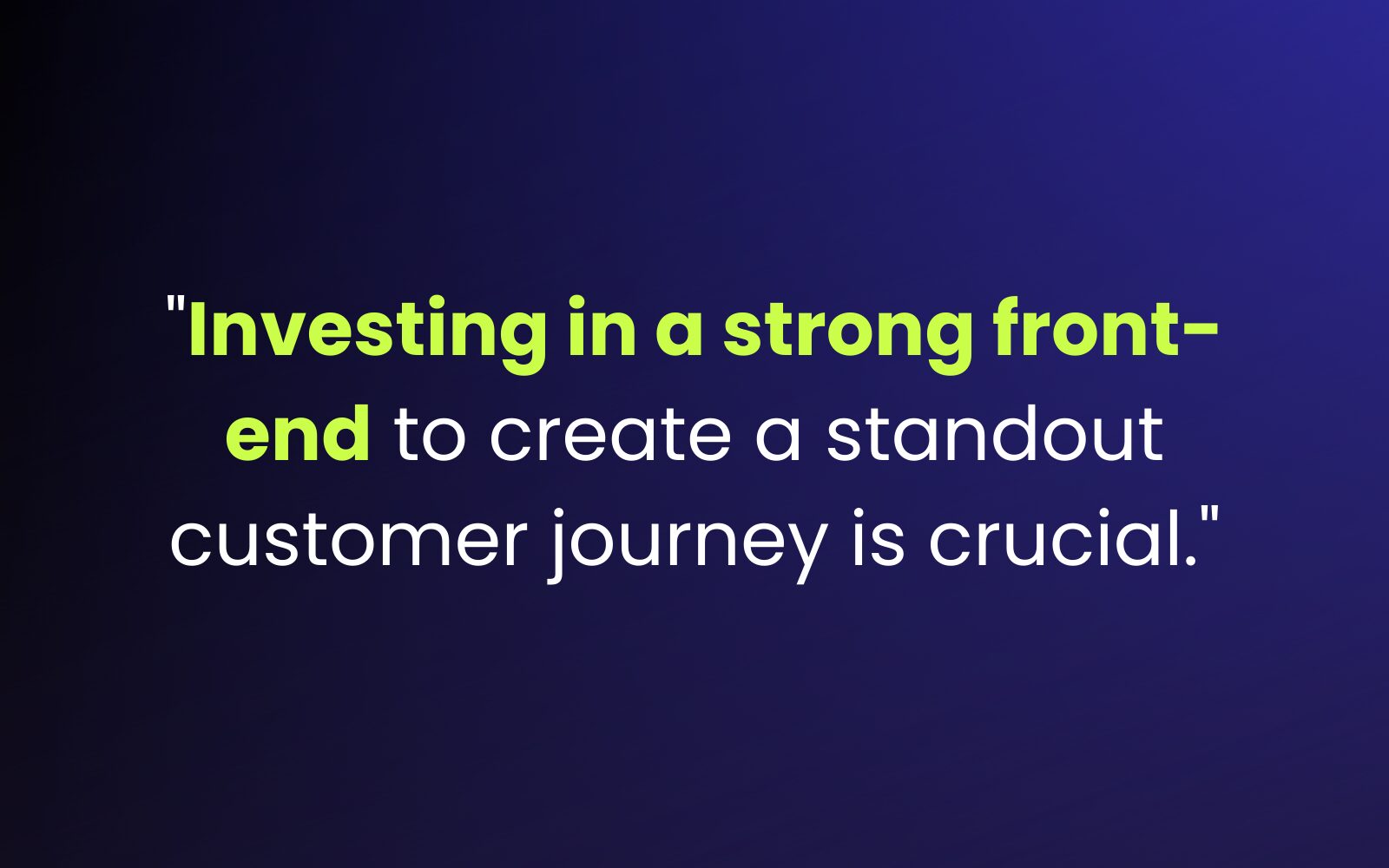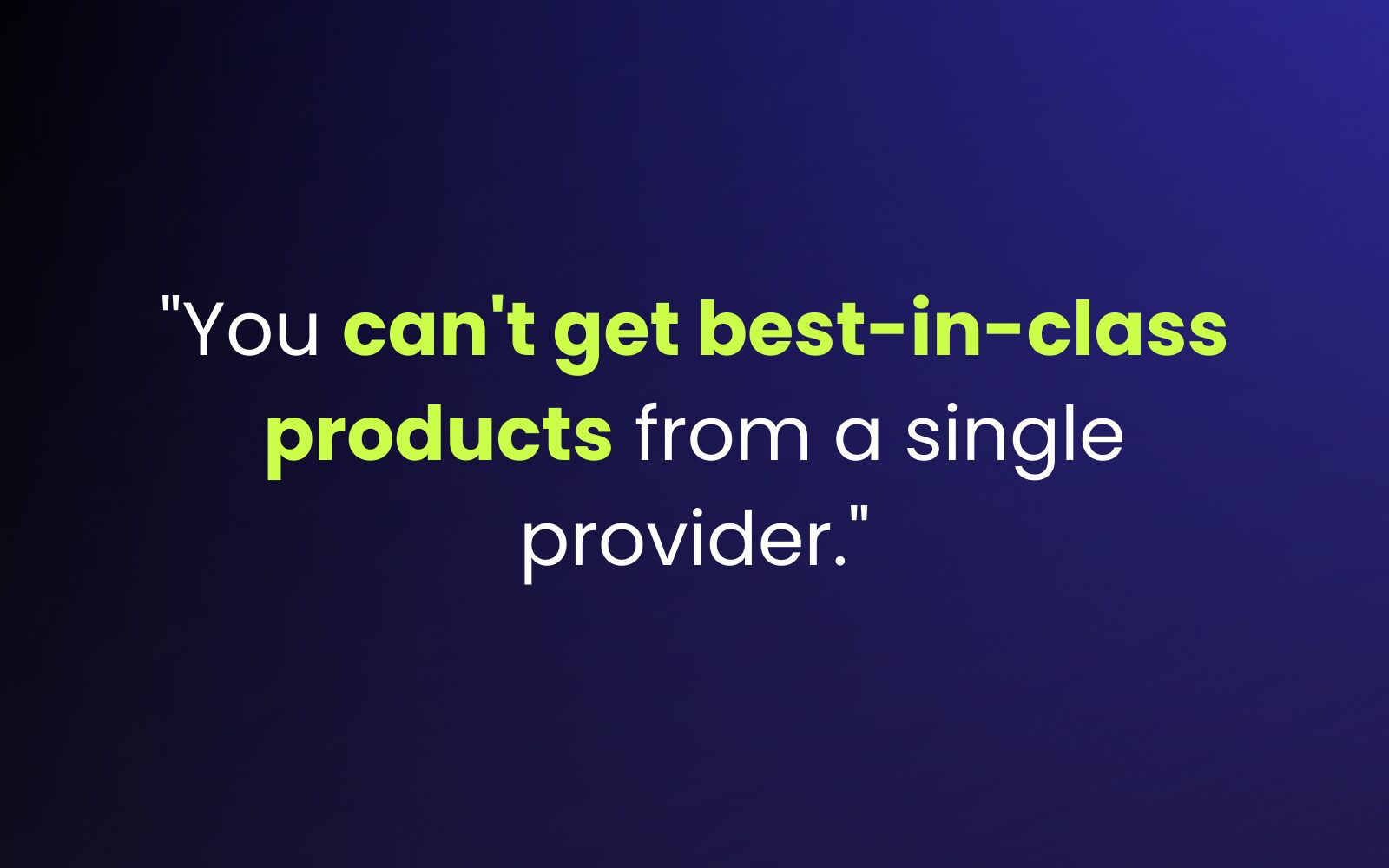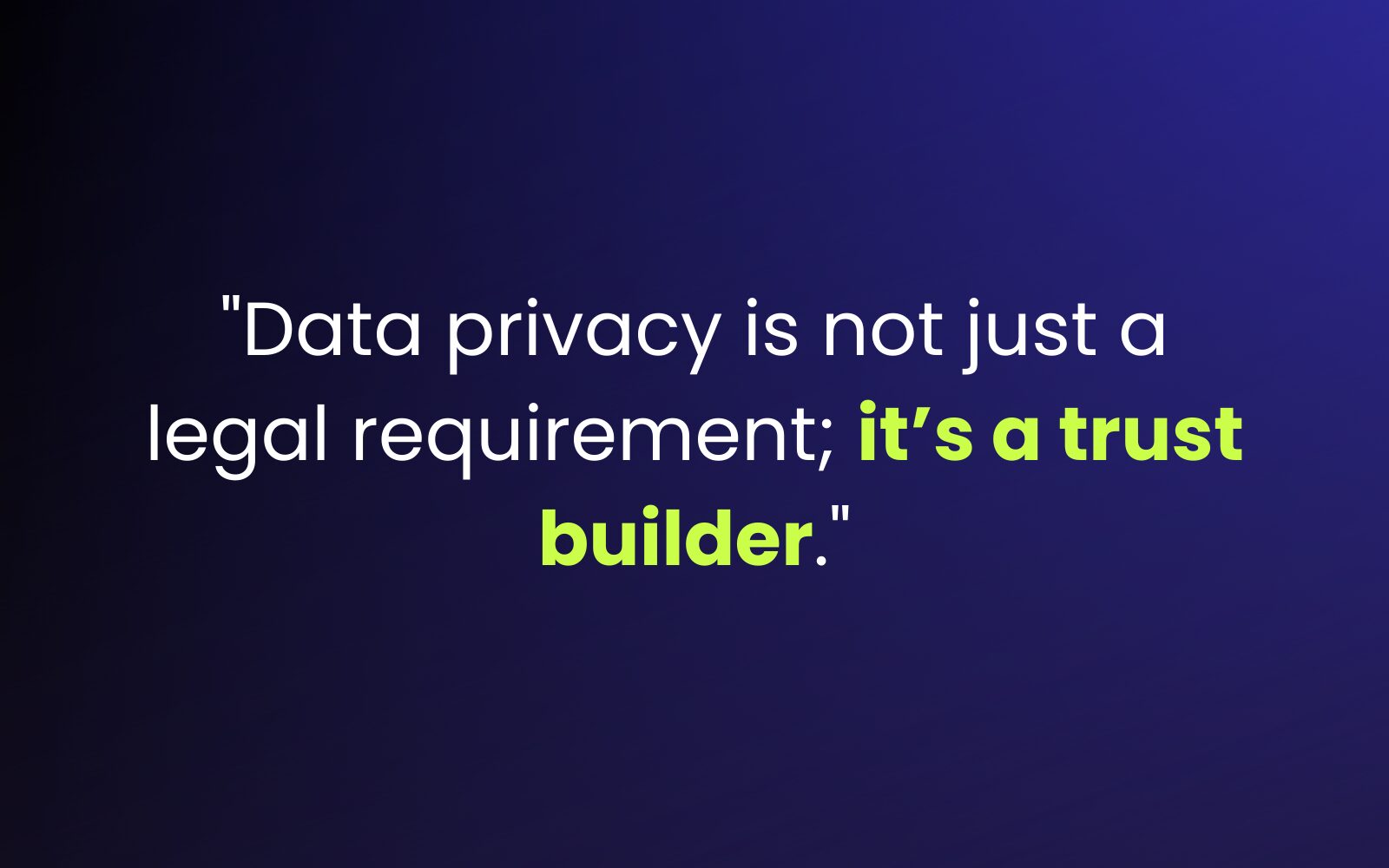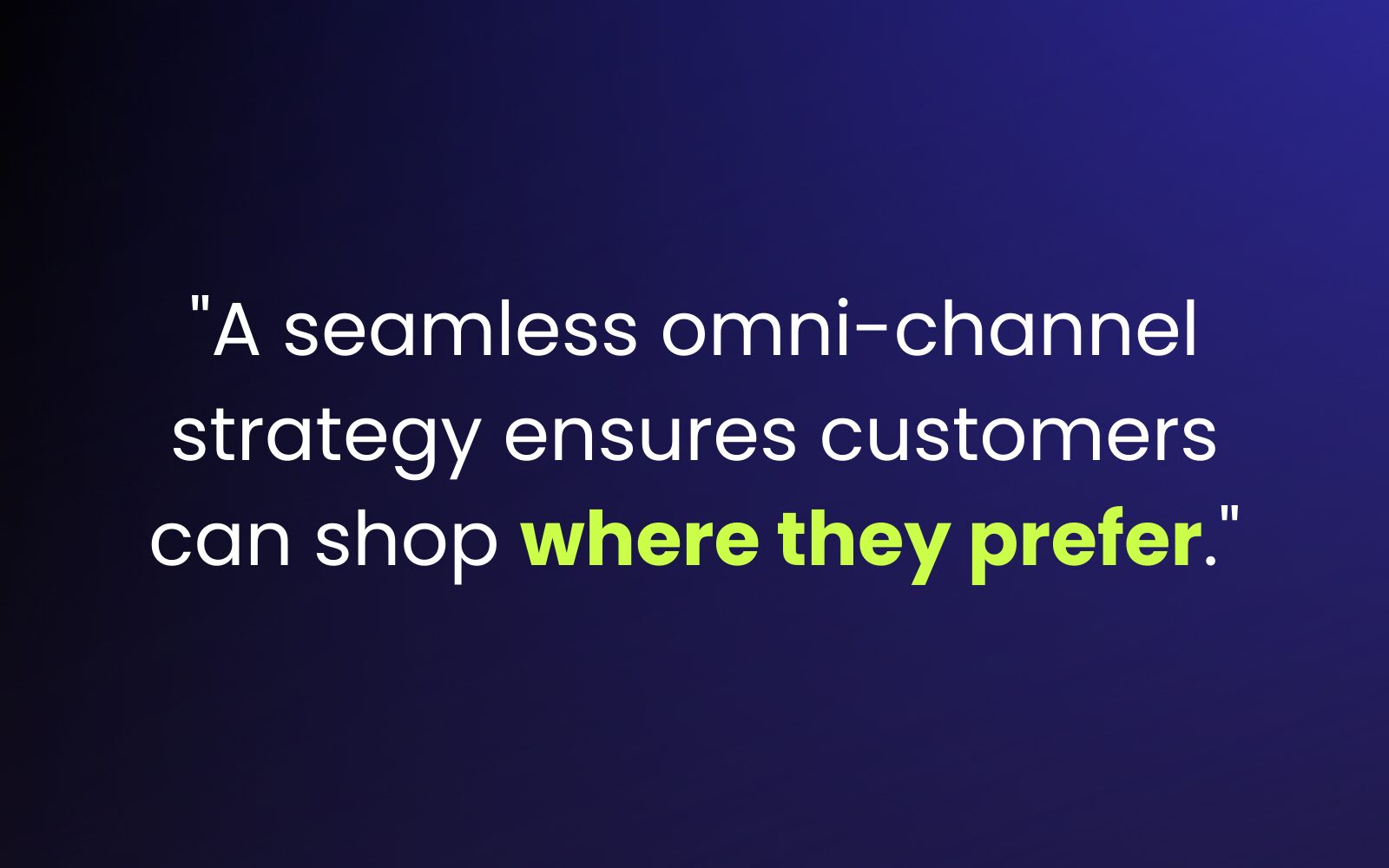Ecommerce Experts
Scaling E-commerce and Navigating Tech Challenges: Hot Takes from Jennifer Peters of OLLY

Global e-commerce sales are projected to hit $6.3 trillion in 2024, marking an 8.8% annual increase. With 42% of US shoppers planning to spend more online and mobile commerce sales expected to reach $560 billion in the US alone, it’s clear that digital retail is the future. But how do emerging brands navigate this complex landscape? We sat down with Jennifer Peters, Senior Manager of E-commerce at OLLY, to get her expert insights. These include her hot takes on using Shopify, Buy With Prime, data privacy, and picking the right omnichannel strategy.

Learn How to Make Listings That Convert in 2025!
Read our step-by-step guide on how to optimize your listings using Rufus AI insights. Sign up for our newsletter and get your copy for free!
Show me howThe Evolution and Success of OLLY
Jennifer highlights that “creating a delightful product experience is a game changer,” a philosophy that has been central to OLLY’s success. Founded by Eric Ryan in 2015, the brand quickly gained traction with its unique gummy vitamins, which made taking supplements an enjoyable experience.
According to Jennifer, one of the key strategies behind OLLY’s success was its strong branding and packaging. The vibrant and modern packaging appealed to a broad audience, particularly Millennials and Gen Z, helping the products stand out on shelves. This strong visual identity was crucial in attracting new customers and building brand recognition.
In addition to product innovation and branding, strategic partnerships played a significant role in OLLY’s growth. Collaborations with major retailers like Target and Amazon expanded the brand’s reach and made the products easily accessible to a wider audience. Jennifer notes that these partnerships were essential in driving OLLY’s rapid expansion and maintaining a strong market presence.
Understanding the Basics: Front-End vs. Back-End
“Investing in a strong front-end to create a standout customer journey is crucial,” advises Jennifer. For any e-commerce brand, understanding the roles of front-end and back-end development is key to delivering an exceptional customer experience. The front-end, or client-side, is what customers see and interact with on your website. This includes everything from the layout and design to the overall user experience. “Front end is the thing that the customers actually interface with… the store that you see on www.olly.com, that is the front end,” Jennifer explains.
Meanwhile, the back-end, or server-side, is the engine that keeps your website running smoothly. It handles the databases, server logic, and application functionality. Jennifer points out that the back-end deals with “database stuff and reporting and analytics and things that customers never see but as marketers and as business people we need to function and make good decisions.”
Tips for Managing Your Front- vs. Back-End
Here are three strategies to help ensure a balanced and efficient approach:
- Prioritize the Front-End: Create a visually appealing, easy-to-navigate website to enhance customer interaction and satisfaction.
- Ensure Back-End Efficiency: Maintain robust back-end systems to support data management, analytics, and overall functionality.
- Balance Both Sides: A strong front-end attracts customers, while a reliable back-end ensures they stay by providing a seamless shopping experience.
By mastering both front-end and back-end development, your brand can deliver a cohesive and engaging e-commerce experience that keeps customers coming back.
Building a Smart Tech Stack for Emerging Brands
“Planning your tech stack roadmap is crucial to avoid future headaches,” shares Jennifer. This principle is essential for any e-commerce business looking to scale efficiently and sustainably. Jennifer emphasizes that relying on a one-size-fits-all tech solution can lead to significant pitfalls. Instead, integration is key to scaling effectively. “You can’t get best-in-class products from a single provider,” she highlights.
When setting up your tech stack, platforms like Shopify serve as a prime example of balancing simplicity and scalability. According to Jennifer, Shopify’s user-friendly interface, extensive integrations, and robust features illustrate what an ideal tech stack should look like for emerging brands.
What Makes an Effective Tech Stack?
- User-Friendly Interface: Your tools should be easy to use and set up, minimizing the learning curve and allowing your team to focus on growth rather than troubleshooting.
- Scalability: Jennifer advises, “Think about where you want your business to be in the next few years and choose tools that can scale with you.” This ensures that as your business grows, your tech stack can grow with it.
- Robust Features and Integrations: Ensure your tech stack includes comprehensive features and integrates well with other tools. “Shopify’s app ecosystem is vast. Make sure to utilize apps that can seamlessly integrate with your store to enhance functionality,” she adds.
Tips for Building Your Tech Stack
To effectively set up and manage your tech stack, consider the following tips:
- Start Simple: Focus on essential tools that will help you get your store up and running effectively. Avoid overwhelming yourself with too many tools at the beginning to maintain clarity and efficiency.
- Plan for Growth: Anticipate your business’s future needs and select scalable solutions. Consider where you want your business to be in the next few years and choose tools that can support that vision.
- Leverage Integrations: Utilize a platform’s ecosystem of apps to enhance your store’s capabilities and improve functionality. Ensure the tools you select can seamlessly integrate with each other to create a cohesive system.
- Regularly Review Your Stack: Regularly assess the tools you’re using to ensure they still meet your needs as technology evolves. Be prepared to update and adapt your tech stack to keep up with new advancements and business requirements.
By strategically choosing and integrating the right tools from the beginning, you can create a strong foundation for your e-commerce business. This foundation supports both current operations and future growth, ensuring that your tech stack evolves with your business.
Data Privacy – A Priority for All Brands
“Data privacy is not just a legal requirement; it’s a trust builder,” Jennifer emphasizes. Without a doubt, protecting customer data is more critical than ever. With increasing incidents of data breaches and the growing importance of customer trust, ensuring robust data privacy practices is essential for any brand.
Jennifer’s approach to maintaining data privacy and trust involves several key strategies:
- Prioritizing Customer Consent: Jennifer stresses the importance of transparency and obtaining explicit consent from customers before collecting and using their data. This practice both complies with legal requirements as well as builds trust with customers.
- Limiting Data Access: To safeguard customer information, Jennifer advocates for restricting access to sensitive data. “Not everyone on your team needs access to all customer data. Limiting access reduces the risk of data breaches,” she explains.
- Regular Audits and Updates: Jennifer recommends conducting regular audits of data privacy practices to ensure compliance and effectiveness. She also advises staying updated with the latest regulations and best practices to continually enhance data security measures.
Tips for Maintaining Data Privacy
To effectively manage data privacy and build customer trust, consider the following actionable insights:
- Be Transparent: Clearly communicate to customers what data you are collecting and how it will be used. Obtain explicit consent before collecting any personal information.
- Restrict Data Access: Limit access to sensitive customer data to only those team members who absolutely need it. Implement strict access controls to protect information.
- Conduct Regular Audits: Regularly review your data privacy practices to ensure they are up-to-date and compliant with current regulations. Address any gaps or vulnerabilities promptly.
- Stay Informed: Keep abreast of the latest developments in data privacy laws and best practices. Adapt your strategies accordingly to maintain robust data protection measures.
For instance, while she acknowledges the potential of Amazon’s “Buy with Prime” feature, especially for smaller brands looking to enhance their customer reach and conversion rates, she also highlights the need for careful consideration when integrating new technologies. Jennifer points out that initial versions of “Buy with Prime” faced some technical challenges, which underscores the importance of continuous improvement and robust data protection. This cautious approach reflects a commitment to safeguarding customer data and ensuring a seamless, trustworthy shopping experience.
If you are interested to learn the benefits that Buy With Prime can bring to your brand, check out our blog post featuring our interview with Amazon’s Derek Majewski.
AI and E-commerce – Future Trends
“Leveraging AI can drive personalization and efficiency,” Jennifer notes. Artificial Intelligence is rapidly reshaping the e-commerce landscape, offering brands innovative ways to enhance customer experience and streamline operations. As AI technology continues to evolve, brands must stay informed about its potential and practical applications.
How AI is Reshaping E-commerce
- Personalization: AI enables highly personalized shopping experiences by analyzing customer data and behavior. “AI can tailor product recommendations, content, and offers to individual customers, significantly improving engagement and conversion rates,” explains Jennifer.
- Customer Service: AI-powered chatbots and virtual assistants provide instant customer support, answering queries, and resolving issues in real-time. This not only enhances customer satisfaction but also reduces the workload on human support teams.
- Inventory Management: AI helps in optimizing inventory levels by predicting demand patterns. “With AI, brands can forecast inventory needs more accurately, reducing overstock and stockouts,” says Jennifer.
- Fraud Detection: AI systems can detect fraudulent activities by analyzing transaction patterns and flagging anomalies. This enhances security and builds customer trust.
Tips for Leveraging AI in E-commerce
To effectively implement AI in your e-commerce strategy, consider the following insights:
- Focus on Personalization: Use AI to analyze customer data and behavior to deliver tailored product recommendations and personalized shopping experiences.
- Implement AI-powered Customer Service: Deploy chatbots and virtual assistants to provide real-time support and enhance customer satisfaction. This can help manage customer inquiries efficiently and improve overall service quality.
- Optimize Inventory Management: Leverage AI to forecast demand and manage inventory levels accurately. This can reduce costs associated with overstock and prevent stockouts, ensuring a smooth supply chain operation.
- Enhance Security with AI: Use AI to monitor transactions and detect fraudulent activities. Implementing robust AI-driven security measures can protect your business and build trust with customers.
By embracing these AI applications, brands can drive both personalization and efficiency, staying competitive in the evolving e-commerce landscape. Jennifer’s insights underscore the transformative potential of AI, highlighting its role in shaping the future of e-commerce. Speaking of which, we also discussed this in our interview with Andrew Freeman of Colgate-Palmolive Skin-Health Group. If you’re interested in learning more, check out our blog post Mastering Digital Marketing Strategies and Leadership: Insights from Andrew Freeman.
Omnichannel Strategies for Success
“A seamless omni-channel strategy ensures customers can shop where they prefer,” Jennifer shares. Certainly, a cohesive omnichannel approach is essential for enhancing customer experience and driving sales. By providing a consistent and integrated shopping experience across all channels, brands can meet customers wherever they choose to engage.
The Importance of a Cohesive Omnichannel Strategy
- Consistent Customer Experience: Jennifer emphasizes the need for a unified brand experience across all channels. “Whether a customer is shopping online, in-store, or via mobile, they should receive the same level of service and quality,” she advises. This consistency builds trust and loyalty.
- Avoiding Channel Conflict: Jennifer advises against creating competition between channels. “It’s important to foster cooperation rather than competition between different sales channels to ensure a smooth customer journey,” she explains. This helps prevent internal conflicts and promotes a unified strategy.
- Enhanced Customer Convenience: A seamless omni-channel strategy allows customers to switch between channels effortlessly. Jennifer highlights the importance of integrating online and offline experiences, such as offering in-store pickup for online orders, to enhance convenience.
Tips for Implementing Omnichannel Strategies
To successfully implement a cohesive omnichannel strategy, consider the following insights:
- Ensure Consistency Across Channels: Maintain a unified brand experience in terms of service, quality, and messaging across all channels. This helps build customer trust and loyalty.
- Promote Channel Cooperation: Foster a collaborative environment where different sales channels work together rather than compete. This ensures a smooth and cohesive customer journey.
- Integrate Online and Offline Experiences: Enhance customer convenience by integrating your online and offline channels. Offer services like in-store pickup for online orders to provide a flexible shopping experience.
By following these strategies, brands can create a seamless omnichannel experience that meets customer expectations and drives satisfaction. Jennifer’s insights highlight the importance of a cohesive approach, ensuring that customers can shop where and how they prefer, without any friction. For more key tips on implementing omnichannel strategies, read our post on How to Build Brand Loyalty Through Omnichannel Engagement.
Conclusion
Jennifer’s insights and strategies are invaluable for any e-commerce business aiming for growth and excellence. Implementing her guidance can help drive growth, enhance customer satisfaction, and build lasting relationships. For a deeper dive into these topics and more, watch the full interview with Jennifer on our YouTube channel.
LET’S DISCOVER WHAT’S POSSIBLE FOR YOUR BRAND
We’re here to listen and uncover opportunities tailored to your unique goals.
Fill out the form to get started, and you’ll walk away with real insights and actionable recommendations—whether we work together or not.
- HANDS-ON LEADERSHIP
- AWARD-WINNING PARTNERSHIPS
- CUSTOM-BUILT SOLUTIONS
